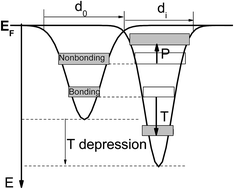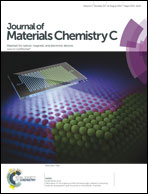Coordination-resolved local bond relaxation and electron binding-energy shift of Pb solid skins and atomic clusters
Abstract
Lead (Pb) demonstrates pronounced energy states pertaining to undercoordinated skin and edge atoms. The physical origin of these excessive states still remains unclear. Here, we show that the consistency between the density functional theory calculations and photoelectron spectroscopy measurements confirmed our theoretical predictions on the 5d core-level shift of Pb skins and clusters. It is clarified that shorter and stronger bonds between the undercoordinated atoms cause the local densification and entrapment of core electrons, which, in turn, polarize the otherwise conducting electrons in the skins and edges, resulting in the respective electron binding-energy shift. Numerical analysis has revealed that 5d5/2 level shifts from 18.283 eV for an isolated Pb atom to 3.478 eV upon bulk formation. Meanwhile, this strategy has enabled the determination of local bond length, bond energy, binding energy density, and atomic cohesive energy at the undercoordinated atomic sites.


 Please wait while we load your content...
Please wait while we load your content...